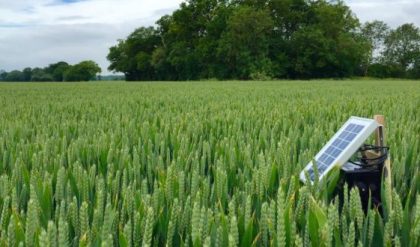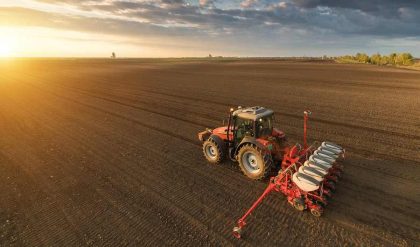Methods of Sowing:
The sowing method is determined by the crop to be sown. There are 6 sowing methods which differ in their merits, demerits and adoption. Those are:
1. Broad casting
2. Broad or Line sowing
3. Dibbling
4. Transplanting
5. Planting
6. Putting seeds behind the plough.
1. Broad casting:
It is the scattering of seeds by hand all over the prepared field followed by covering with wooden plank or harrow for contact of seed with soil. Crops like wheat, paddy, Sesamum, methi, coriander, etc. are sown by this method.
Advantages:
1) Quickest & cheapest method
2) Skilled labour is not uniform.
3) Implement is not required,
4) Followed in moist condition.
Disadvantages:
1) Seed requirement is more,
2) Crop stand is not uniform.
3) Result in gappy germination & defective wherever the adequate moisture is not present in the soil.
4) Spacing is not maintained within rows & lines, hence interculturing is difficult.
2.Drilling or Line sowing:
It is the dropping of seeds into the soil with the help of implement such as mogha, seed drill, seed-cum-ferti driller or mechanical seed drill and then the seeds are covered by wooden plank or harrow to have contact between seed & soil. Crops like Jowar, wheat Bajara, etc. are sown by this method.
Advantages:
1) Seeds are placed at proper & uniform depths,
2) Along the rows, interculturing can be done,
3) Uniform row to row spacing is maintained,
4) Seed requirement is less than ‘broad casting’
5) Sowing is done at proper moisture level.
Disadvantages:
1) Require implement for sowing,
2) Wapsa condition is must.
3) Plant to plant (Intra row) spacing is not maintained,
4) Skilled person is required for sowing.
3. Dibbling:
It is the placing or dibbling of seeds at cross marks (+) made in the field with the help of maker as per the requirement of the crop in both the directions. It is done manually by dibbler. This method is followed in crops like Groundnut, Castor, and Hy. Cotton, etc. which are having bold size and high value.
Advantages:
1) Spacing between rows & plants is maintained,
2) Seeds can be dibbled at desired depth in the moisture zone,
3) Optimum plant population can be maintained,
4) Seed requirement is less than other method,
5) Implement is not required for sowing,
6) An intercrop can be taken in wider spaced crops,
7) Cross wise Intercultivation is possible.
Disadvantages:
1) Laborious & time consuming method,
2) Require more labour, hence increase the cost of cultivation,
3) Only high value & bold seeds are sown,
4) Require strict supervision.
4. Transplanting: It is the raising of seedlings on nursery beds and transplanting of seedlings in the laid out field. For this, seedlings are allowed to grow on nursery beds for about 3-5 weeks. Beds are watered one day before the transplanting of nursery to prevent jerk to the roots. The field is irrigated before actual transplanting to get the seedlings established early & quickly which reduce the mortality. Besides the advantages & disadvantages of dibbling method, initial cost of cultivation of crop can be saved but requires due care in the nursery. This method is followed in crops like paddy, fruit, vegetable, crops, tobacco, etc.
5. Planting: It is the placing of vegetative part of crops which are vegetatively propagated in the laid out field. E.g.: Tubers of Potato, mother sets of ginger & turmeric, cuttings of sweet potato & grapes, sets of sugarcane.
6. Putting seeds behind the plough: It is dropping of seeds behind the plough in the furrow with the help of manual labour by hand. This method is followed for crops like wal or gram in some areas for better utilization of soil moisture. The seeds are covered by successive furrow opened by the plough. This method is not commonly followed for sowing of the crops.





Comments are closed.